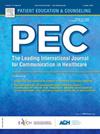Effectiveness of interpreters and other strategies for mitigating language barriers: A systematic review
IF 2.9
2区 医学
Q2 PUBLIC, ENVIRONMENTAL & OCCUPATIONAL HEALTH
引用次数: 0
Abstract
Objective
To examine the effectiveness of different communication strategies for mitigating language barriers on patient-, provider- and context-related outcomes.
Methods
A systematic search was conducted in nine databases for quantitative studies from 2013 comparing different strategies. The studies’ quality was assessed with the Evidence Project Risk of Bias tool and the certainty of evidence with the GRADE approach.
Results
Twenty-six articles were included, all about healthcare settings. Generally, having a shared language (e.g., a provider in the patient’s native language) followed by using professional interpreters yielded the most positive outcomes, and in-person or video interpreters more than telephone interpreters. Compared to professional interpreters, the translation quality of informal interpreters was only similar when assessing patient outcomes after surgery, and the quality of digital translation tools was only sufficient with simple messages or when messages were pre-translated.
Conclusion
Having a provider in patients’ native language and having professional interpreters outperform other strategies for mitigating language barriers in healthcare. However, other strategies may suffice in specific situations. Future research should explore the effectiveness of (combining) strategies, especially in social care.
Practice implications
This review can inform policy and help develop guidelines on mitigating language barriers to support providers in their daily practice.
翻译的有效性和其他减轻语言障碍的策略:一个系统的回顾
目的探讨不同沟通策略对减轻语言障碍对患者、提供者和情境相关结果的影响。方法系统检索2013年以来9个数据库进行定量研究,比较不同策略。采用Evidence Project Risk of Bias工具评估研究质量,采用GRADE方法评估证据的确定性。结果共纳入26篇文章,均与医疗环境有关。一般来说,使用共同语言(例如,使用患者母语的服务提供者),然后使用专业口译员产生了最积极的结果,面对面或视频口译员比电话口译员更有效。与专业口译员相比,非正式口译员的翻译质量仅在评估患者术后预后时相似,数字翻译工具的质量仅适用于简单信息或预翻译信息。结论使用患者母语的医护人员和专业口译人员在减轻医疗保健中的语言障碍方面优于其他策略。但是,在特定情况下,其他策略可能就足够了。未来的研究应探讨(组合)策略的有效性,特别是在社会关怀方面。实践意义这项审查可以为政策提供信息,并有助于制定指导方针,减轻语言障碍,以支持提供者在日常实践中。
本文章由计算机程序翻译,如有差异,请以英文原文为准。
求助全文
约1分钟内获得全文
求助全文
来源期刊

Patient Education and Counseling
医学-公共卫生、环境卫生与职业卫生
CiteScore
5.60
自引率
11.40%
发文量
384
审稿时长
46 days
期刊介绍:
Patient Education and Counseling is an interdisciplinary, international journal for patient education and health promotion researchers, managers and clinicians. The journal seeks to explore and elucidate the educational, counseling and communication models in health care. Its aim is to provide a forum for fundamental as well as applied research, and to promote the study of organizational issues involved with the delivery of patient education, counseling, health promotion services and training models in improving communication between providers and patients.
 求助内容:
求助内容: 应助结果提醒方式:
应助结果提醒方式:


